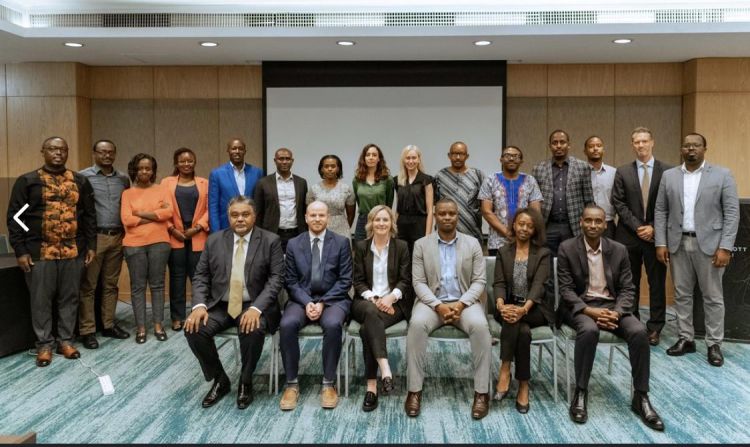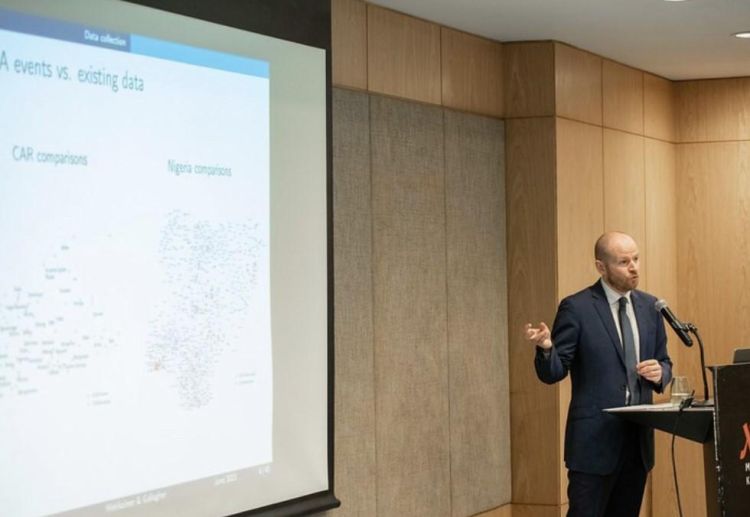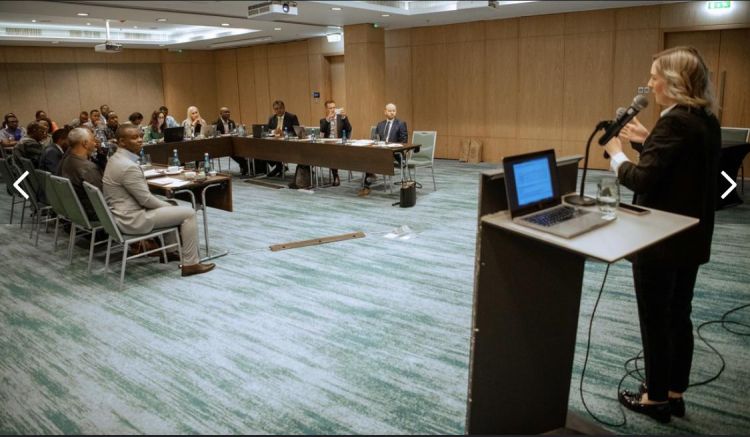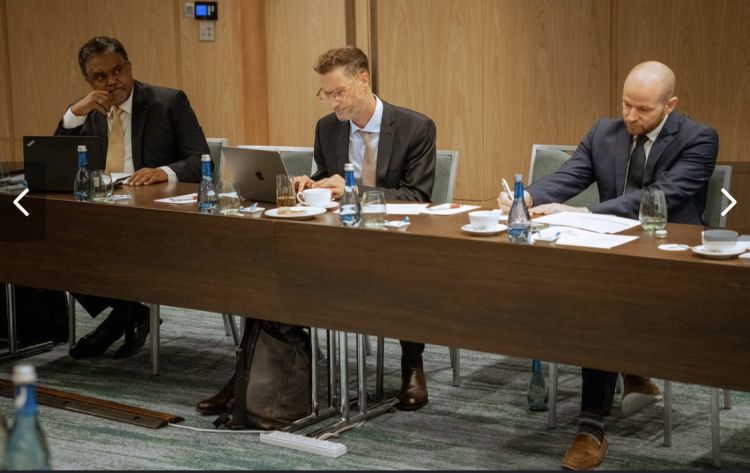Professor Adrian Gallagher and Dr Helena Hinkkainen present research findings in Kigali, Rwanda
Professor Gallagher and Dr Hinkkainen presented their findings to policymakers and practitioners in Kigali, Rwanda.

On 28 June 2023, Professor Adrian Gallagher and Dr Helena Hinkkainen presented research findings from their project ‘Explaining Non-State Armed Groups Perpetrating Mass Atrocities’ to policymakers and practitioners in Kigali, Rwanda.
The event was organised by Aegis Trust and brought together over twenty policymakers and practitioners from Africa.

Professor Gallagher presenting research findings.
The project is funded by the Economic and Social Research Council and provides the first data collection capturing twelve different types of mass atrocity crimes in six countries: Central African Republic, Democratic Republic of Congo, Iraq, Nigeria, Somalia and Syria.
The crimes include enslavement, mutilation, imprisonment, torture, rape, forced pregnancy, sexual slavery, enforced prostitution, enforced sterilisation, forced abortion, humanitarian attacks and peacekeeping attacks.
The data collection process consisted of coding staff reading over one million reports and coding over three thousand mass atrocity events in six countries from 1913 to 2021.
As a result, our dataset, ‘Correlates of Non-State Mass Atrocities’ (CONMA), sheds unique insights into both state and non-state actors’ perpetration of mass atrocity crimes. The project draws on the data to analyse non-state armed groups’ use of mass atrocity crimes in relation to three themes:
- armed group interaction with other actors, such as government forces, peacekeepers and other armed groups.
- as a tactic compared to other violent tactics.
- the extent to which such methods are driven by local geographic and demographic factors.

Photograph of Dr Hinkkainen presenting research findings.
This was the final workshop as part of the ESRC project which followed events in London in May and New York in June.
The findings will be published through a series of articles in the next 8-12 months and the dataset made Open Access thereafter.

Photograph of Professor Gallagher on a panel.




